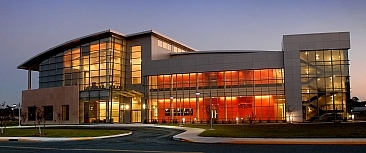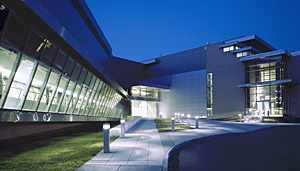NNI Research Centers
A highly significant impact of the NNI has been the focused investment by the NNI-participating agencies in the establishment and development of multidisciplinary research and education centers devoted to nanoscience and nanotechnology. NNI agencies have developed an extensive infrastructure of over 60 major interdisciplinary research and education centers and user facilities across the country. Many such centers, with state of the art equipment for nanoscale S&T research, are designated as user facilities and are available to researchers from academia and the private sector, and to scientists at the national laboratories.
NNI Centers and Networks of Excellence
Government funds for nanotechnology research have created some of the most sophisticated nanoscience laboratories in the world. In addition to providing the facilities, the National Nanotechnology Initiative also has created programs to attract researchers across an array of disciplines and to facilitate discoveries.
Research at Center for Functional Nanomaterials (CFN)
 Center for Functional Nanomaterials at Brookhaven National Laboratory. Image credit: Department of Energy
Center for Functional Nanomaterials at Brookhaven National Laboratory. Image credit: Department of Energy
Centers and networks provide opportunities and support for multidisciplinary research among investigators from a variety of disciplines and from different research sectors, including academia, industry and government laboratories. Such multidisciplinary research not only leads to advances in knowledge, but also fosters relationships that enhance the transition of basic research results to devices and other applications. All agency centers and networks created under NNI auspices over the last seven years are listed here, organized by funding agency.
NIST Nanotech Center
 NIST Center for Nanoscale Science and Technology. Image credit: HDR Architecture, Inc./Steve Hall © Hedrich Blessing.
NIST Center for Nanoscale Science and Technology. Image credit: HDR Architecture, Inc./Steve Hall © Hedrich Blessing.
- National Science Foundation
- Department of Energy
- Department of Defense
- NASA
- National Institute for Occupational Safety and Health
- National Institute of Standards and Technology
- National Institutes of Health
Other Research Centers
Some centers and networks are collaborative efforts of several agencies. Among them is the National Nanomanufacturing Network, established in 2007 and scheduled to become fully operational in 2008, which is a partnership between four NSF Nanoscale Science and Engineering Centers (NSEC), DOD laboratories, and NIST. In addition, industry, business and professional organizations are partnering in this effort for nanotechnology development.
Also in 2008, NSF will establish a new center on environmental health and safety in 2008 and will expand national outreach activities at its nanotechnology research and education networks: National Nanotechnology Infrastructure Network, Network for Computational Nanotechnology, Nanotechnology in Society Network, Nanoscale Center for Learning and Teaching, Nanoscale Informal Science Education, Nanoscale Science and Engineering Centers, National Nanomanufacturing Network, and Materials Research Science and Education Centers.
A major milestone for DOE in 2008 is the start of full operations at the agency's fifth Nanoscale Science Research Center (NSRC) user facility located at Brookhaven National Laboratory. These five major user facilities are a primary component of the scientific infrastructure developed through the NNI. All five DOE NSRCs are anticipated to be in full operation by the middle of FY 2008.
NIH continues to fund a network of nanotechnology research centers, supported by both individual NIH institutes and the NIH-wide Nanomedicine Roadmap Initiative. Centers' programs promote multidisciplinary research and development that engage basic biological, physical science, clinical perspectives and expertise, and leverage, and enhance the centers' investments.
The Center for Nanoscale Science and Technology (CNST) at NIST is now in full operation. Initial work includes fundamental research that may be key to the development of next-generation data storage devices. Other areas of emphasis at NIST include nanomanufacturing and the development of standard reference materials.